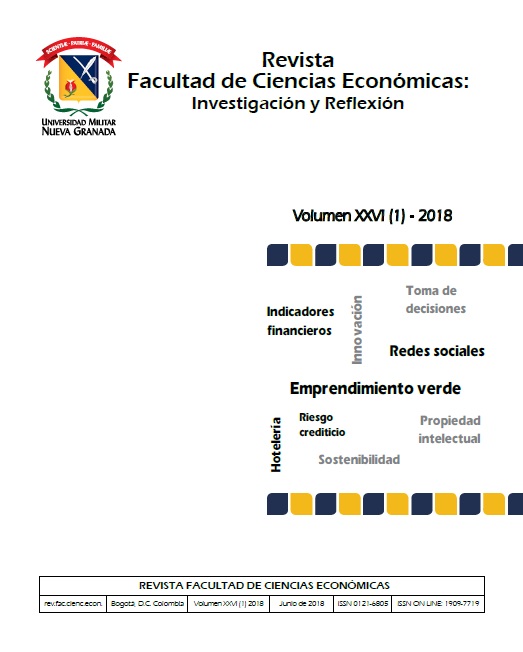Asymmetries in educational systems and institutional patterns: towards the construction of a human capital global indicator
Abstract
This paper presents a theoretical and empirical review of the relationship between human capital and economic growth. It is found that there is a relationship between human capital and other factors, such as the quality of education, political stability, the reliability of the judicial system, corruption and bureaucracy. Likewise, an analysis is presented about the theoretical considerations of human capital, highlighting the statistical divergences presented in the estimated coefficients, when different variables are taken to capture the effects of this factor on the product. In addition, a theoretical review is made on the importance of human capital in productivity, and institutional asymmetries are analyzed with current statistics for 37 countries. Finally, a Human Capital Global Indicator (IGCH) is proposed and calculated.Downloads
References
Acemoglu, D. & Verdier, T. (1998). Property Rights, Corruption and the Allocation of Talent: A General Equilibrium Approach. Econ. J. 108 (450):1381–1403. https://doi.org/10.1111/1468-0297.00347
Barro, J. R. (1991). Economic Growth in a Cross Section of Countries. Quarterly Journal of Economics, CVI (May): 407-43 https://doi.org/10.2307/2937943
Blanchard, O. (1997). Microeconomic, Ed. Prentice Hall.
Caballé, J. & Santos, M.S., (1993). On endogenous growth with physical and human capital. Journal of Political Economy 101: 1042-1067. https://doi.org/10.1086/261914
Caselli, F., Esquivel, G. & Lefort, F. (1996). Reopening the Convergence Debate: A New Look at Cross-Country Growth Empirics. Journal of Economics Growth, 1: 363-389. https://doi.org/10.1007/BF00141044
Dessus S. (2001). Human capital and growth the recovered role of educational systems. World Bank
Dornbusch, R., Fischer S. & R. Startz (1998), Macroeconomía, McGraw-Hill, Séptima Edición, Cap. 1.
Johannes, H. (1998). Human capital and economic growth a survey of the literatura. CPB Report
Lucas, R. E. Jr., (1988). On the Mechanics of Development Planning. Journal of Monetary Economics 22: 3-42. https://doi.org/10.1016/0304-3932(88)90168-7
Mankiw G. Macroeconomía. (2009) 5ª. Edición. Cengage Learning editores. México D.F.
Mankiw. N., Romer, D. & Weil, D. (1992). A Contribution to the Empirics of Economic Growth. The Quarterly Journal of Economics, 107 (2): 407-437 https://doi.org/10.2307/2118477
Mauro, P. (1995). Corruption and Growth. Quarterly Journal Economics 110 (3) https://doi.org/10.2307/2946696
Mauro, P. (1997). The effects of corruption on growth, investment, and government expenditure: A cross-country analysis. Institute International for Economics.
Pritchett, L. (1996). Where Has All the Education Gone?. Policy, Research working paper; no. WPS 1581. Washington, DC: World Bank.
Rebelo, S. (1991). Long-Run Policy Analysis and the Long-Run Growth. Journal of Political Economy 99 (3): 500-521. https://doi.org/10.1086/261764
Reveiz, E. (2004). El desenlace neoliberal: tragedia o renacimiento.
Rogers, M. (2008). Directly Unproductive Schooling: How Country Characteristics Affect the Impact of Schooling on Growth. European Economic Review, 52: 356-385. https://doi.org/10.1016/j.euroecorev.2007.03.001
Romer, P. (1986). Increasing Returns and Long-Run Growth. Journal of Political Economy, Romer, P. (1990). Endogenous Technological Change. Journal of Political Economy 98(14): 71-102.
Sáenz, J. & Díaz, A. (2010). Evaluation of Educational System, Including Peer Instruction, Educational Levels and Degree s of Freedom, Working paper
Shultz T.W. (1961). Investment in Human Capital. America Economic Review. 51: 14-15
Uzawa, H. (1965). Optimal technical change in an aggregative model of economic growth. International Economic Review 6: 18-31. https://doi.org/10.2307/2525621











